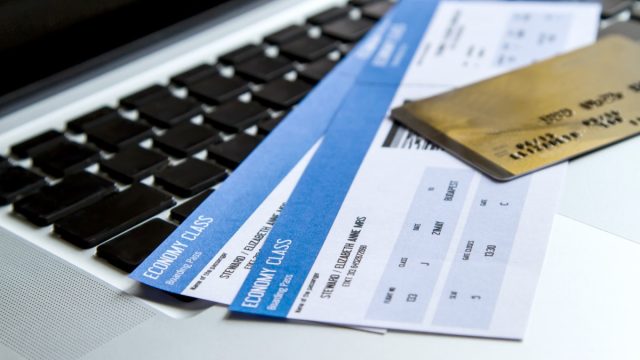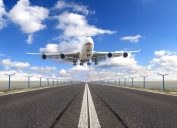This Is What It Will Cost to Fly After Coronavirus
Everything about your air travel experience is about to change, pricing included.

Under normal circumstances, flight pricing changes constantly. The same ticket for the same flight could cost $200 one week and $750 the next, thanks to airlines' complex algorithms that factor in everything from time of year to current availability to fuel prices to the prices of their competitors. But our current situation is anything but normal. Flight pricing as we know it has been thrown out the window during the coronavirus pandemic. Airlines have had to drastically reduce their services once borders closed, fear grew, and demand for flights dropped. Initially, airfare prices decreased dramatically, with airlines offering bargain rates in an attempt to entice people to get back in the friendly skies and reduce their massive financial losses. But what does the future hold for the price of plane tickets? Well, it's a bit up in the air.
In the short term, prices will likely remain low for a while, but don't count on those bargains sticking around for too long. "The most likely implication for flight prices is there'll be a gradual normalization of flight supply and demand—and thus prices—with a lag between opening up a state and when people start traveling again," says George Zeng, CEO of flight deals site Moonfish, which is currently tracking global changes in flight pricing.
In fact, Zeng says we've probably passed the nadir of the price drop. There's already been a rebound in prices since the pandemic began a few months ago, with airlines restoring some service as destinations begin opening to tourism once again. "Month-over-month domestic prices have increased by about 8 percent, and month-over-month international prices have increased 18 percent," says Zeng. This rise will likely continue until travel resumes to pre-pandemic levels—which Delta CEO Ed Bastian suggests might take around three years.

The bigger mystery, however, is what's going to happen to flight prices in the long term. While it's impossible to say definitively, one major factor that will likely affect the cost of flying is how airlines will operate in terms of passenger counts.
Since the pandemic began, a number of airlines have blocked off their middle seats as a social distancing practice, which naturally reduces the number of passengers that can fit on the plane, and therefore reduces the airline's revenue from ticket sales. On May 5, the International Air Transport Association (IATA) reported that in order to just break even on the cost of operating a flight with no middle seats booked, airlines would have to raise ticket prices by 43 to 54 percent from their 2019 pricing. That would likely deter a number of travelers from buying tickets altogether (although the cramped quarters of a full row could also scare off potential passengers).
"We must arrive at a solution that gives passengers the confidence to fly and keeps the cost of flying affordable. One without the other will have no lasting benefit," Alexandre de Juniac, IATA's Director General and CEO, said in the report.
Ultimately, basic economics, including supply and demand, will likely keep flight prices relatively reasonable on the consumer front. If prices get too high, fewer passengers will fly, and airlines won't be able to make money. But if prices fall too low, airlines won't be able to make a substantial profit. So as states start to reopen and a new normal is established across the country and throughout the world, airlines will have to find that sweet spot that not only keeps passengers flying, but also keeps their coffers full. And to learn about how planes may look different as a result of the coronavirus, here are 13 Things You May Never See on Airplanes Again After Coronavirus.





















